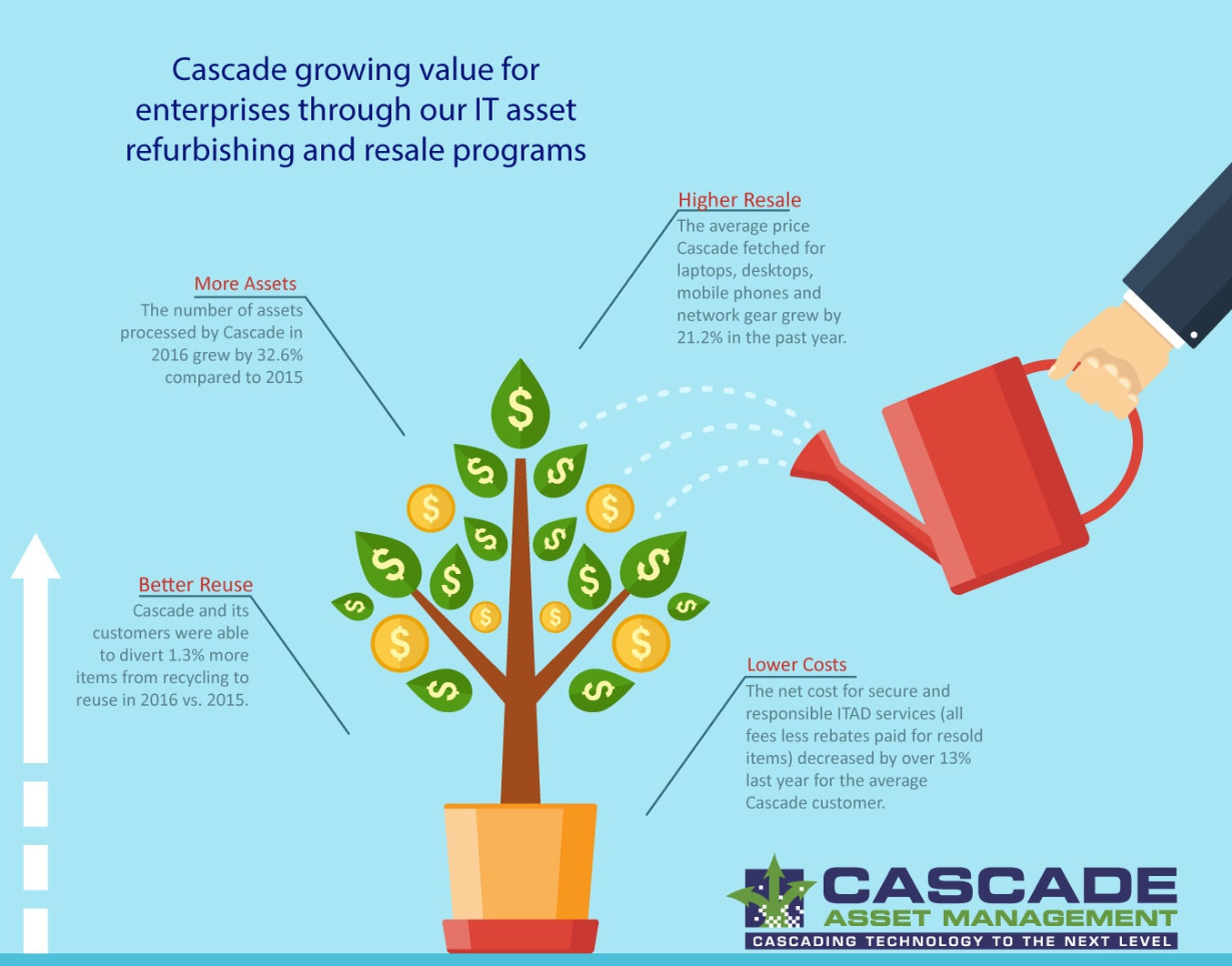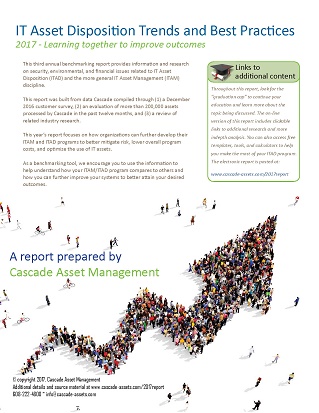One of the biggest concerns with IT Asset Disposition programs is the cost. So how much does it cost to outsource ITAD services to a professional ITAD firm? For Cascade the cost is dependent on what value added services you select (such as on-site data destruction, 3-pass wipes, Computrace removal, etc.) and whether these costs can be offset by revenues generated from the resale of equipment
While your disposal policy should dictate your security and environmental processing requirements, there are steps every organization can take to reduce its disposition costs or turn this process into a revenue generator.




